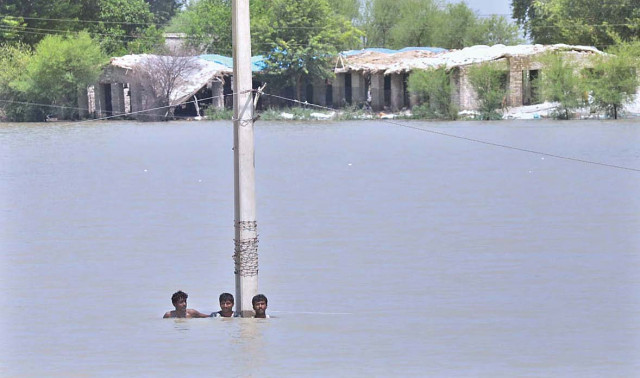Why we do not care
The magnitude of the disaster has not yet been able to merit the response it deserved. The government was slow to respond and the media was busy giving time to frivolous activities. Apparently, the floods in Balochistan, which had killed 80 in one week and affected over 60,000 people, went unnoticed as media pundits were busy analysing the various conspiracy theories behind the Margalla plane crash. It reaffirmed that the class to which people belong and the place where deaths occur do matter when air time to be given is decided for any tragedy.
Where we have failed
The government was caught unprepared. The meteorological department failed to forecast the disaster. Early flood warning systems, the few which we have, proved ineffective. PM Gilani has already sought an explanation from DG Met. But will it be enough to ensure that the same lapse does not happen in the future? Hardly. It is true that Met has come a long way under the leadership of Qamar Zaman Chaudhry but it still needs an updating of its early warning systems especially as far as communities in the north and north-west are concerned.
National Disaster Management Authority (NDMA), established after the October 2005 earthquake, is still grappling with host of administrative issues. As late as in March 2010, the chairman NDMA Lt-Gen (retd) Farooq Ahmad Khan was complaining that emergency relief work and helicopters came under the administrative control of the cabinet division and the control was yet to be transferred to NDMA. District Disaster Management Authorities (DDMAs) remain weak and poorly resourced. Furthermore, the information rallying capacity of NDMA leaves much to be desired for. The only information their website offers is number of casualties in each province along with the minimal estimate of damage to property. Any vibrant system of live flood damage updates is conspicuously absent, or at least the information never timely travels bottom down to the masses.
The risk that no one talks about
Where under-resourced rescue and relief work of agencies has highlighted the weaknesses in governance, it has also presented another alarming danger to society. Remember, we are talking here about a province which has already been affected by militancy and extremism owing to the space provided by poor governance. The void created by the absence of institutions in ungoverned areas has led to breeding of many rogue elements in the past in the shape of Mangal Bagh and Fazlullah. After the October 2005 earthquake, when government institutions failed to provide relief, it was Jamat ud Dawa and other voluntary organisations that were able to mobilize the community effectively. Just imagine thousands of unattended, stranded and displaced people, who have lost their livelihood means in a province where grievances are exploited by fiends to their advantage, and one can only predict catastrophe.
Could disaster be avoided?
In 2006 the Office for the Coordination of Humanitarian Affair (OCHA) carried out a detailed analysis of disaster response agencies of Pakistan. In its report on flood preparedness and response it noted,
Owing to non-occurrence of floods over the years, laxity has been observed in preparedness. No hazard assessment and coordination mechanisms are in place for flash floods in NWFP, Baluchistan and Northern Areas.
We did not pay heed to this. The growth of disaster relief cells and agencies has been reactionary in this country. We start preparing for disasters once it has struck.
What to do now
There are different disaster response agencies and they have their own strengths and weaknesses. There is a need to improve coordination between them and to develop functional linkages. Functional clarity needs to emerge to remove duplication of efforts. Right now, there are sporadic relief services being provided especially at the lowest level. This needs to be integrated. The emphasis should be on developing the capacity of Local Disaster Management Authorities (DDMAs) and on organisation within the community.
The danger is far from over
According to the Federal Flood Commission, the situation in Khyber-Pakhtunkhwa and Sindh will worsen in the coming days before it gets any better. It is true that citizens of this country display a selfless attitude when it comes to helping their brethren. But eventually it is the capacity of state institutions that needs to be developed in order to improve governance. This is not the first time that floods have wreaked havoc upon us. Will it be the first time the government wakes up to address the issue?
You can donate Rs10 to help affectees by texting 'D' to 2471. To learn more about how to help visit D for Donate.



COMMENTS
Comments are moderated and generally will be posted if they are on-topic and not abusive.
For more information, please see our Comments FAQ